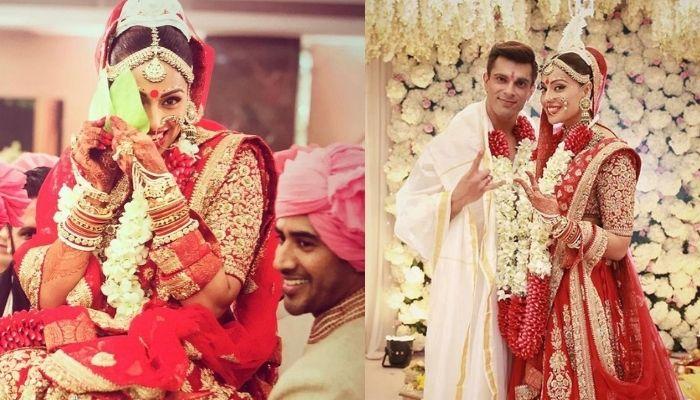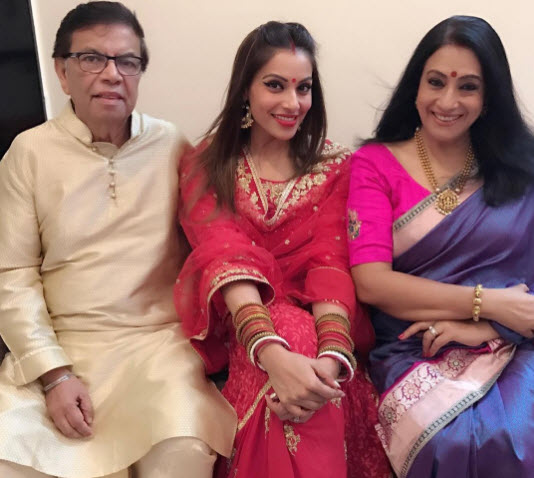

Bengali weddings are an elaborate amalgamation of rituals, which are beautiful visual treat filled with colours and merriment. Here we bring to you all the traditions and rituals performed in a Bengali wedding!

Weddings are special and India, being a land of many cultures and regions, makes them even more memorable. Every culture and region has their own set of rites and rituals for not just occasions but weddings also. This diversity is what makes our country a beautiful blend of traditions, cultures and colours.
Weddings of every region and community differ from each other, yet what remains common is the respect for traditions and their rich spiritual significance. Bengali weddings too are an elaborate amalgamation of rituals, which are a beautiful visual treat filled with colours and merriment. We have seen many TV shows and Bollywood movies, showcasing Bengali weddings, fascinating us with their charm. Here we bring to you some basic rituals and traditions that are a part of a Bengali wedding.

After the couple approves of each other as life partners, their families meet and invite a priest and it is called Aadan Pradaan. The priest studies their horoscopes to make sure that there is no matching line of lineage between the two families. Once everything is settled down, then both the families exchange gifts. Some families also skip this custom as they don't believe in horoscope matching.
Aashirbaad is done as a mark of acceptance for the bride and the groom by their respective in-laws. The bride’s family visits the groom’s house to shower their blessings on him and vice-versa. They sprinkle trefoil leaves and husked rice on the to-be bride and groom and gift gold ornaments to them.
Don't Miss: This Bride Wore Unique 'Doli Wale Kaleere' On Her Wedding, Narrates Her Love Story In Her 'Mehendi'
This ritual is called vridhi puja, and in this, the bride-to-be and the groom-to-be remember and seek blessings from their respective ancestors.
Aai Budo Bhaat is done the night before the wedding in the bride's home. In this, the bride-to-be enjoys her last meal at her parents' house before she gets married. This is a night dedicated to her, where her family and close friends sing, dance and celebrate the occasion.
In Gae Halud Tattva, the bride receives gifts that are sent to her with love from her in-laws. The bride gets sarees, makeup products, different sweets, paan, curd, fish, husked rice and many more traditionally significant things.
Dodhi Mongol is the ceremony, which is performed at the dawn of the wedding day at the houses of the bride and groom separately. The to-be married couple is accompanied by a few married women to a nearby pond, where they take blessings from Goddess Ganga. The bride and the groom then bring home a pitcher of water from that pond.
Similar to the Haldi ceremony in North India, Holud Kota, Snan is a ritual, where either five or seven married women apply turmeric paste and oil to both the bride and the groom in their respective houses. They are then supposed to bathe and wear new clothes.
Sankha Porana is the ritual also dedicated to the bride. Here, seven married women make the bride wear conch shell bangles, known as the Shakha (white bangles) and Paula (red bangles). She wears a pair of red bangles followed by a pair of white ones. After this, she gets ready for the wedding.
Bor Jatri is similar to a baaraat in a North Indian wedding. In this, the groom, along with his family and friends, dress up for the wedding and proceed towards the wedding venue.
Boro Boron is the ritual in which, a plate called baran dala is touched to the groom’s forehead then to the ground and again to his forehead. After this, the bride’s mother performs aarti and welcomes the guests into the venue and sweets are served.
In Potto Bastra, the groom is seated at the wedding altar, also known as the Chadnatolla and given new clothes by the person, who will do the sampradaan. Usually, the ritual is performed by the elderly male members of the bride's family, either by the bride's father or uncle. After this ceremony, the bride enters the mandap.
Saat Paak is a beautiful sight to be witnessed only at a Bengali wedding where the bride sits on a wooden stool called pidi/piri, and is carried to the mandap by her brothers or uncles. The bride is not supposed to see her groom when she enters the mandap, so she has to keep her face covered with sacred betel leaves. Keeping her lifted up on the stool, her brothers then walk around the groom seven times.
After the seven rounds, the bride removes the beetle leaves from the front of her face and finally looks at her groom. The love-filled first exchange of glance between the bride and the groom in the presence of all the guests is called Subho Dristi.
After Subho Drishti, the bride and groom exchange flower garlands while the bride is still seated on the pidi. They exchange the garlands three times and mark the first step of accepting each other as husband and wife. This ritual is the same as Jaimala in Hindu weddings and is called Mala Badal in Bengali wedding.
Here, the bride and groom both sit at the altar as an elder member of the bride’s family (who carried out the Potto Bastra earlier) gives the bride’s hand into the groom’s hand. Then their hands are tied with a sacred thread as the priest recites Vedic chants. This is similar to Kanyadaan in Hindu wedding rituals and is called Sampradaan.
Yagna is where the priest recites mantras and the couple sits in front of the holy fire while he does so. The couple then takes seven rounds around the fire, which are known as Saptapadi/Saat paak. The bride and the groom also have to touch seven suparis kept on seven paan leaves with their toes.
In this ritual, the bride and groom offer puffed rice to the holy fire. The bride's brother gives the puffed rice in her hands while the groom holds her hands by standing behind her to pour the offerings into the holy fire. This ritual is called Anjali.
After all the rituals are done, the groom applies sindoor on the bride’s hair parting. This marks the completion of their marriage rituals. After this, the bride covers her head with a Ghomta, a new saree gifted to her by her in-laws. This ritual is called Sindoor Daan.
Bidaay is when the bride bids farewell to her family and leaves for her new home with her husband and in-laws.
In this ritual, the newlyweds are welcomed to the groom’s home. Female relatives pour holy water under the vehicle in which the couple arrives. At the door, the bride then steps into a large plate containing lac dye (red in colour) and milk and enters the new house leaving colourful footprints on the floor. This ritual is called Bou Baran.
The bride and groom have to sleep in separate rooms on their first night in the groom's home and it is called kaal ratri.
When the new bride in this ritual has to cook a dish for her new family, it is called Bou Bhaat. A lunch or dinner party is also hosted for the groom’s relatives and friends.
The last of all wedding ceremonies is Phool Shojja. This is the couple’s first night together as husband and wife. Their room and the bed is decorated with flowers. The bride also gets ready in a new saree and wears floral ornaments.
Every Bengali community has certain different rituals and traditions attached to their weddings. But all said and done, Bengali weddings truly are a visual treat filled with colours, sounds and beauty!
Next Read: The Significance Of 'Ululudhvani' As A Bengali Wedding Tradition And Why It Is Considered Auspicious